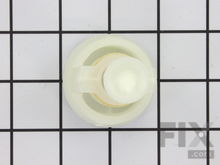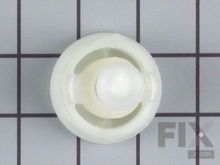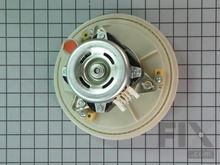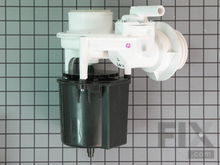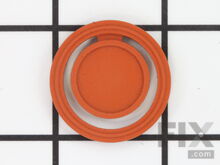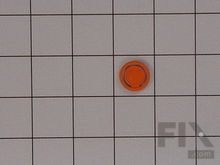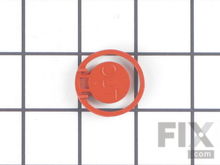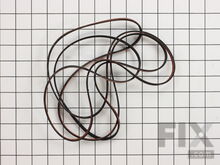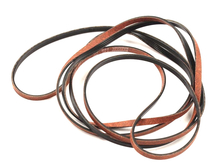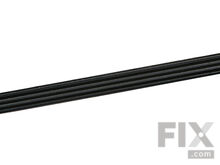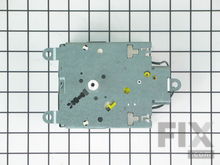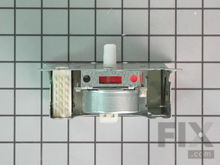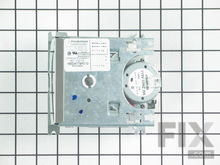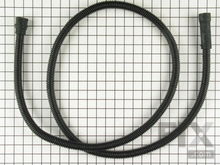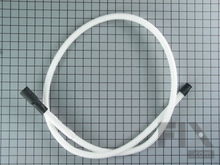How To Repair A Dishwasher That Won’t Drain
- Rated as EASY
- 564 repair stories
- 6 step by step videos
Piston & Nut Assembly
A problem in the dishwasher’s drain function could be a problem in the check valve of the drain sump. If your model has this valve, it will have a piston and nut assembly at the base of the tub, under the sump cover. The dishwasher can only pump out all of the water if the piston forms a watertight seal when it’s all the way down. Remove the four screws at the sump cover and check the action on the piston as well as the seal when it is in the down position. The piston and nut assembly should have a gasket over its thread, which can be replaced if it’s worn, cracked, or not fitting tightly.
Drain Pump & Motor
There are three types of pumps used by dishwashers to drain water out of the machine. The most common type is a single pump, run by a motor. This has a compartment for moving the water around with an impeller and another compartment for draining that has its own impeller. If this is the type of dishwasher pump you have, check the drain impeller first. The pump is a stack of components, which you’ll need to unstack to get at the impeller. Take out the bottom dish rack, the spray arm under it, the cover to the pump and the filter parts. Check if the drain impeller is damaged or worn out, and put in a new one if it is. Make sure the impeller can move freely. Spin the food chopper carefully to check its action: large food bits should not be able to slip past it. Make sure the motor is running in the right direction. If it’s not running at all, use a multi-meter to make sure there is power at the terminals. If it has no power, make sure the door switches, and the timer/electronic control are sending electricity out on that circuit. If there is indeed the correct amount of power at the motor terminals, ascertain whether the motor windings are open. If the motor is making a loud humming noise, the motor may have seized or the drain impellor could be jammed. In that case, you may need a new motor or a combination motor/pump assembly. If your dishwasher has two pumps instead of one, check the drain pump to see if something is blocking the input and output. Make sure that, during the drain cycle, power is coming to the drain pump motor. Check the impeller, as described above. If impeller is sound, the drain pump’s unobstructed, and the motor’s receiving power, check the terminals and windings as described above. Replacing the pump and motor assembly may be the next step. For those dishwashers that drain via the main pump using a drain solenoid and a diverter flapper or valve, check that the solenoid gets power, and that it has continuity. Look for obstructions in the drain pump input and output. The diverter valve or flapper should have working linkage and it should move freely.
Check Valve Flapper
The check valve, used on some dishwasher models, keeps dirty dish water from re-entering the tub after a drain cycle. If the drain hose is getting clogged with food bits or the dishes or dishwasher parts have food stuck on them at the end of the cycle, the check valve could be malfunctioning or clogged with debris. Find the valve, a rubber flapper on the outlet hole of the drain pump or drain pump housing. This flapper should open to let water drain out but seal the outlet during the cycles for washing and water circulation. You can unblock or replace the check valve.
Belt
If yours is an early-model dishwasher, it may drive the pump with a belt. If yours does, make sure it hasn’t stretched out, slipped, or just worn out. These problems would keep the pump from draining the dishwater.
Timer
Check your dishwasher owner’s manual or the manufacturer’s website to see if the drain solenoid or drain pump motor in your model is triggered by a timer in your control panel. If so, a malfunction in that mechanical timer could be the cause of drain water lingering in your dishwasher tub instead of draining out. Unplug the dishwasher, remove the inner door panel, and find the timer inside the door-front control panel. You can use your multi-meter and a wiring diagram to check the timer contacts for continuity. Replace the timer if it is not working right.
Drain Hose
The drain hose for your dishwasher is behind the kick plate at the bottom front of the machine. If there’s a clog or a kink in the hose, that would cause your dishwasher not to drain. Check the whole length of the hose to make sure it is supported so it won’t sag and kink. Make sure it’s clear of debris.Start your inspection at the outlet from the pump or drain housing where the check valve is located. Also examine the hose where it enters the drain system of your house’s plumbing. Replace a kinked hose and clean out or replace a clogged one. If the hose is clogged with food bits, those bits could be originating at a broken food chopper or macerator.
More Repair Parts
Still not sure which part is broken? We can offer you custom troubleshooting help if you search with your model number.





